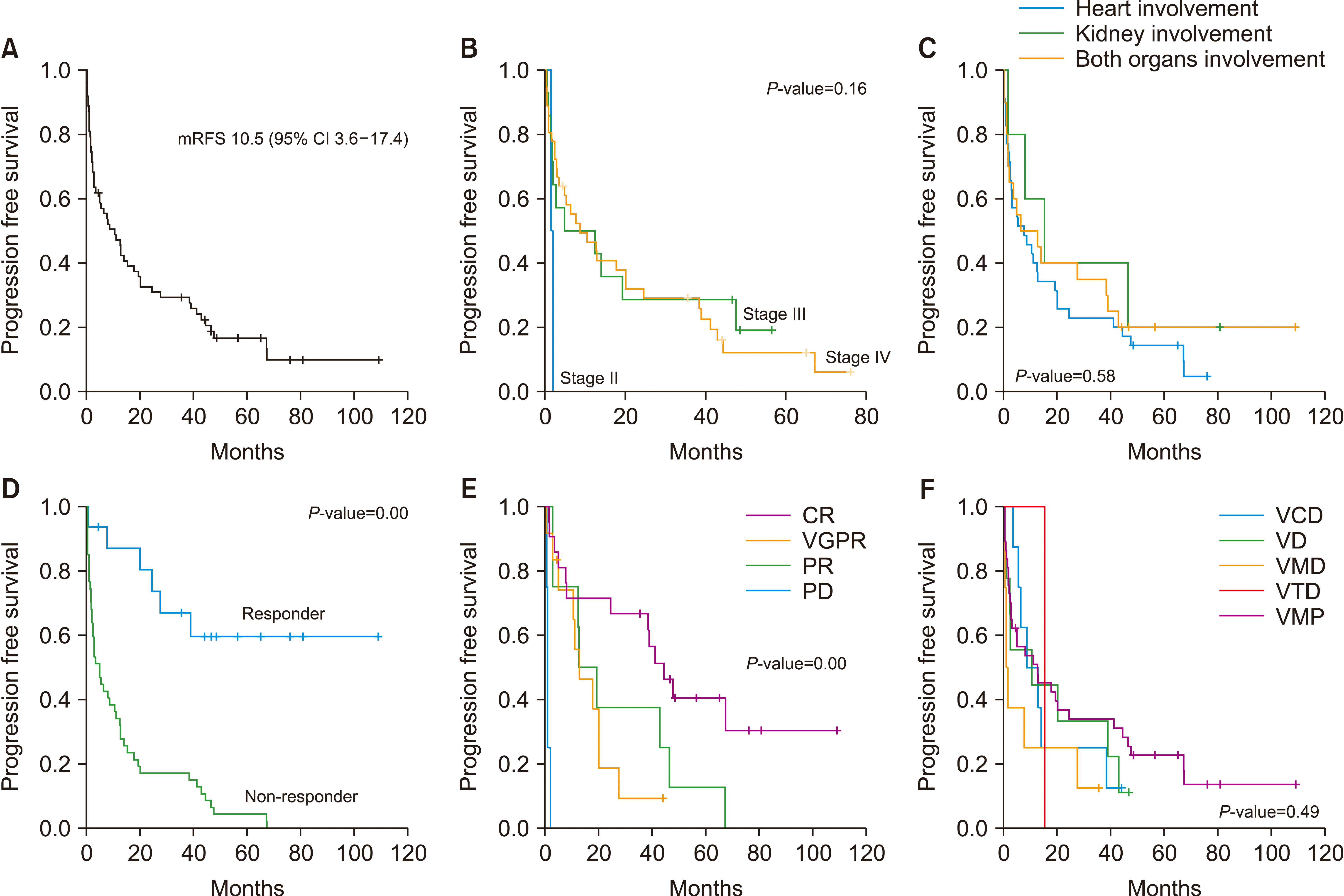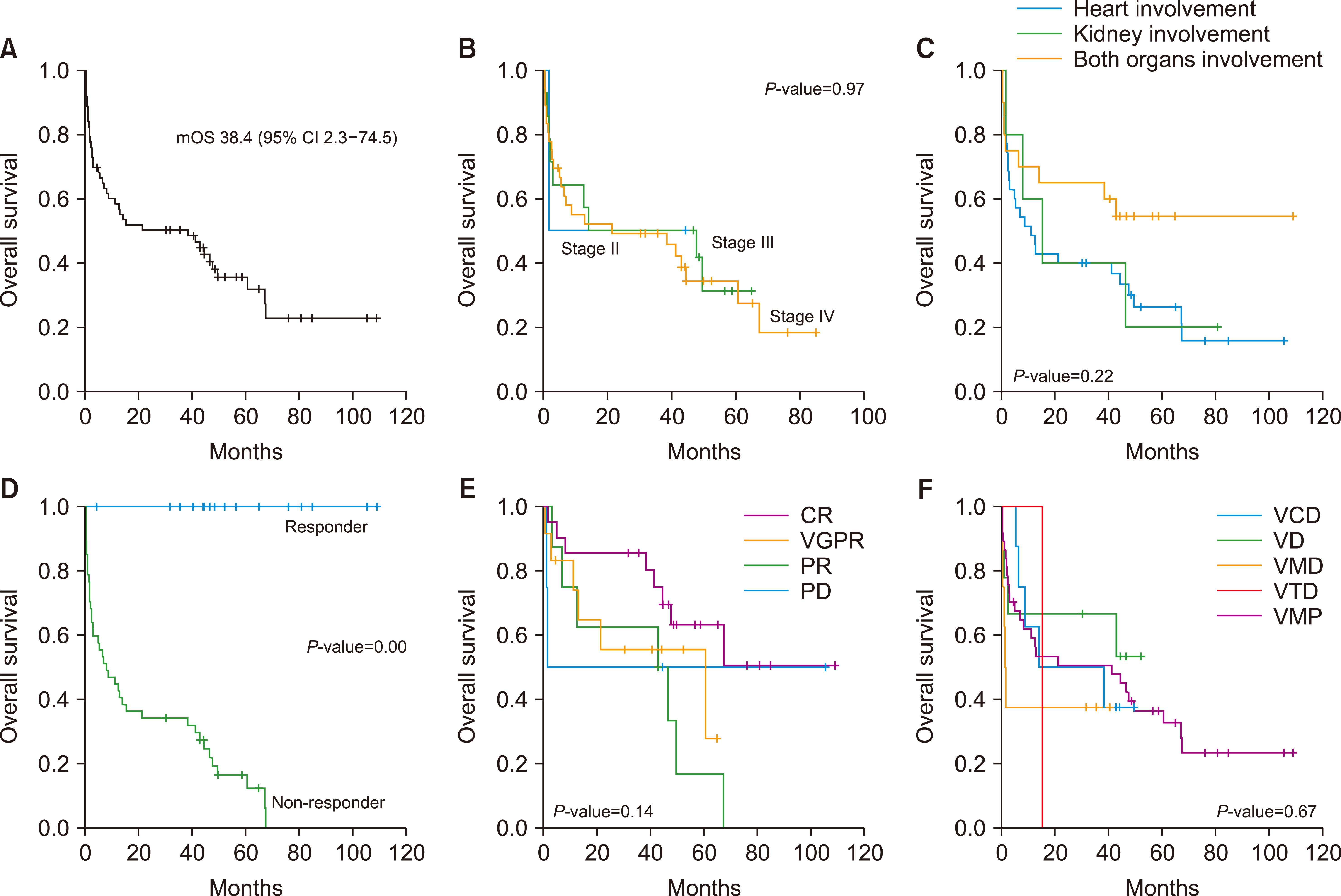2. Palladini G, Dispenzieri A, Gertz MA, et al. 2012; New criteria for response to treatment in immunoglobulin light chain amyloidosis based on free light chain measurement and cardiac biomarkers: impact on survival outcomes. J Clin Oncol. 30:4541–9. DOI:
10.1200/JCO.2011.37.7614. PMID:
23091105.

3. Comenzo RL, Reece D, Palladini G, et al. 2012; Consensus guidelines for the conduct and reporting of clinical trials in systemic light-chain amyloidosis. Leukemia. 26:2317–25. DOI:
10.1038/leu.2012.100. PMID:
22475872.

4. Duhamel S, Mohty D, Magne J, et al. 2017; Incidence and prevalence of light chain amyloidosis: a population-based study. Blood (ASH Annual Meeting Abstracts). 130(Suppl):5577.
5. Dispenzieri A, Gertz MA, Kyle RA, et al. 2004; Serum cardiac troponins and N-terminal pro-brain natriuretic peptide: a staging system for primary systemic amyloidosis. J Clin Oncol. 22:3751–7. DOI:
10.1200/JCO.2004.03.029. PMID:
15365071.

6. Kumar SK, Gertz MA, Lacy MQ, et al. 2011; Recent improvements in survival in primary systemic amyloidosis and the importance of an early mortality risk score. Mayo Clin Proc. 86:12–8. DOI:
10.4065/mcp.2010.0480. PMID:
21193650. PMCID:
PMC3012628.

7. Sitia R, Palladini G, Merlini G. 2007; Bortezomib in the treatment of AL amyloidosis: targeted therapy? Haematologica. 92:1302–7. DOI:
10.3324/haematol.12136. PMID:
18024367.

9. Al Hamed R, Bazarbachi AH, Malard F, Harousseau JL, Mohty M. 2019; Current status of autologous stem cell transplantation for multiple myeloma. Blood Cancer J. 9:44. DOI:
10.1038/s41408-019-0205-9. PMID:
30962422. PMCID:
PMC6453900.

10. Sidiqi MH, Aljama MA, Buadi FK, et al. 2018; Stem cell transplantation for light chain amyloidosis: decreased early mortality over time. J Clin Oncol. 36:1323–9. DOI:
10.1200/JCO.2017.76.9554. PMID:
29558277.

11. Lee JY, Lim SH, Kim SJ, et al. 2014; Bortezomib, melphalan, and prednisolone combination chemotherapy for newly diagnosed light chain (AL) amyloidosis. Amyloid. 21:261–6. DOI:
10.3109/13506129.2014.960560. PMID:
25248716.

12. Mikhael JR, Schuster SR, Jimenez-Zepeda VH, et al. 2012; Cyclophosphamide-bortezomib-dexamethasone (CyBorD) produces rapid and complete hematologic response in patients with AL amyloidosis. Blood. 119:4391–4. DOI:
10.1182/blood-2011-11-390930. PMID:
22331188. PMCID:
PMC3557400.

13. Kastritis E, Anagnostopoulos A, Roussou M, et al. 2007; Treatment of light chain (AL) amyloidosis with the combination of bortezomib and dexamethasone. Haematologica. 92:1351–8. DOI:
10.3324/haematol.11325. PMID:
18024372.

14. Kastritis E, Wechalekar AD, Dimopoulos MA, et al. 2010; Bortezomib with or without dexamethasone in primary systemic (light chain) amyloidosis. J Clin Oncol. 28:1031–7. DOI:
10.1200/JCO.2009.23.8220. PMID:
20085941.

15. Palladini G, Milani P, Foli A, et al. 2014; Melphalan and dexamethasone with or without bortezomib in newly diagnosed AL amyloidosis: a matched case-control study on 174 patients. Leukemia. 28:2311–6. DOI:
10.1038/leu.2014.227. PMID:
25059496.

16. Kastritis E, Leleu X, Arnulf B, et al. 2020; Bortezomib, melphalan, and dexamethasone for light-chain amyloidosis. J Clin Oncol. 38:3252–60. DOI:
10.1200/JCO.20.01285. PMID:
32730181.

17. Kumar S, Dispenzieri A, Lacy MQ, et al. 2012; Revised prognostic staging system for light chain amyloidosis incorporating cardiac biomarkers and serum free light chain measurements. J Clin Oncol. 30:989–95. DOI:
10.1200/JCO.2011.38.5724. PMID:
22331953. PMCID:
PMC3675680.

18. Huang X, Wang Q, Chen W, Ren G, Liu Z. 2016; Bortezomib with dexamethasone as first-line treatment for AL amyloidosis with renal involvement. Amyloid. 23:51–7. DOI:
10.3109/13506129.2016.1138939. PMID:
26862817.

19. Palladini G, Dispenzieri A, Gertz MAA, et al. 2010; Validation of the criteria of response to treatment in al amyloidosis. Blood (ASH Annual Meeting Abstracts). 116(Suppl):1364. DOI:
10.1182/blood.V116.21.1364.1364.

20. Wechalekar AD, Gillmore JD, Bird J, et al. 2015; Guidelines on the management of AL amyloidosis. Br J Haematol. 168:186–206. DOI:
10.1111/bjh.13155. PMID:
25303672.

22. Vaxman I, Gertz M. 2019; Recent advances in the diagnosis, risk stratification, and management of systemic light-chain amyloidosis. Acta Haematol. 141:93–106. DOI:
10.1159/000495455. PMID:
30650422.

23. Larocca A, Bringhen S, Petrucci MT, et al. 2016; A phase 2 study of three low-dose intensity subcutaneous bortezomib regimens in elderly frail patients with untreated multiple myeloma. Leukemia. 30:1320–6. DOI:
10.1038/leu.2016.36. PMID:
26898189.

24. Niesvizky R, Flinn IW, Rifkin R, et al. 2015; Community-based phase IIIB trial of three UPFRONT bortezomib-based myeloma regimens. J Clin Oncol. 33:3921–9. DOI:
10.1200/JCO.2014.58.7618. PMID:
26056177.

25. Kastritis E, Gavriatopoulou M, Roussou M, et al. 2017; Addition of cyclophosphamide and higher doses of dexamethasone do not improve outcomes of patients with AL amyloidosis treated with bortezomib. Blood Cancer J. 7:e570. DOI:
10.1038/bcj.2017.47. PMID:
28622303. PMCID:
PMC5520394.

26. Dumas B, Yameen H, Sarosiek S, Sloan JM, Sanchorawala V. 2020; Presence of t(11;14) in AL amyloidosis as a marker of response when treated with a bortezomib-based regimen. Amyloid. 27:244–9. DOI:
10.1080/13506129.2020.1778461. PMID:
32551974.

27. Jun HJ, Kim K, Kim SJ, et al. 2013; Clinical features and treatment outcome of primary systemic light-chain amyloidosis in Korea: results of multicenter analysis. Am J Hematol. 88:52–5. DOI:
10.1002/ajh.23333. PMID:
23027340.

28. Wechalekar AD, Offer M, Gillmore JD, Hawkins PN, Lachmann HJ. 2009; Cardiac amyloidosis, a monoclonal gammopathy and a potentially misleading mutation. Nat Clin Pract Cardiovasc Med. 6:128–33. DOI:
10.1038/ncpcardio1423. PMID:
19079367.

29. Sanchorawala V, Palladini G, Kukreti V, et al. 2017; A phase 1/2 study of the oral proteasome inhibitor ixazomib in relapsed or refractory AL amyloidosis. Blood. 130:597–605. DOI:
10.1182/blood-2017-03-771220. PMID:
28550039. PMCID:
PMC6911836.





 PDF
PDF Citation
Citation Print
Print




 XML Download
XML Download